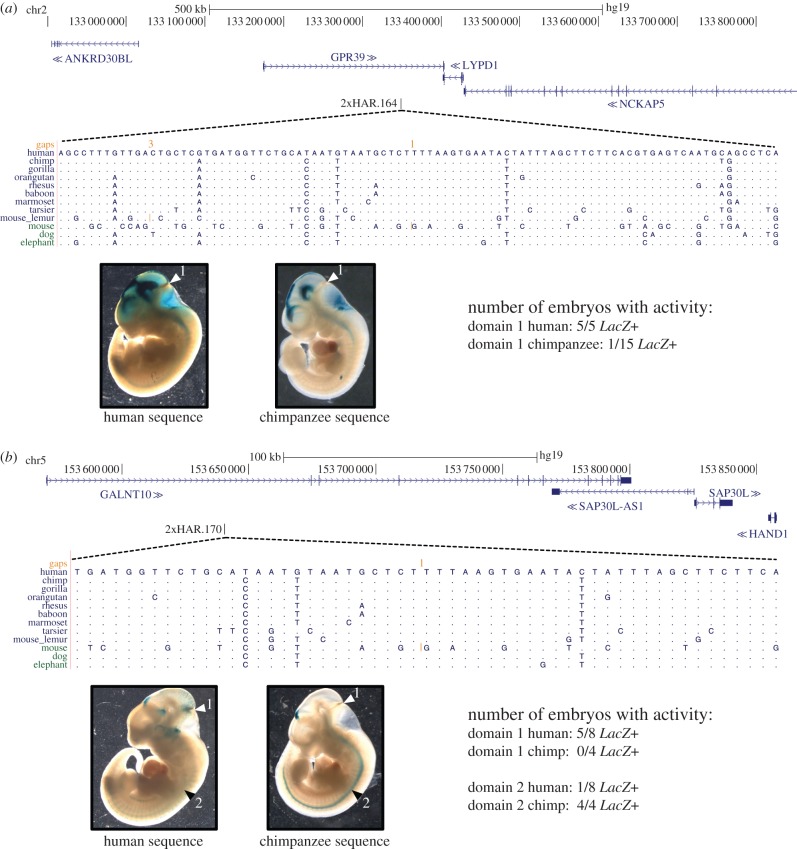Figure 6.
Two ncHARs drive patterns suggestive of unique brain expression in human at the midbrain–hindbrain boundary in transgenic mice. The components of this figure are the same as in figure 4. (a) The genomic context, sequence alignment, and activity domains driven by human and chimpanzee 2xHAR.164 in E11.5 transgenic mice. Nearby developmental genes include LYPD1 and NCKAP5. Both human and chimpanzee sequences drive consistent activity in several brain structures, including the dorsal telencephalon, dorsal pretectum, roof plate of the diencephalon and midbrain, ventral diencephalon, midbrain and hindbrain. However, expression in the boundary between the midbrain and hindbrain (isthmus) is human-specific (arrowhead 1). The mouse orthologue of the nearby LYPD1 gene is expressed in the midbrain at E11.5. (b) 2xHAR.170 also produces human-specific activity in the isthmus (arrowhead 1). In addition, the chimpanzee construct drives strong spinal cord expression, whereas the human construct does not (arrowhead 2). The developmental gene HAND1 is a potential target gene of the 2xHAR.170 enhancer. All embryo images are given in the electronic supplementary material, figure S1.

